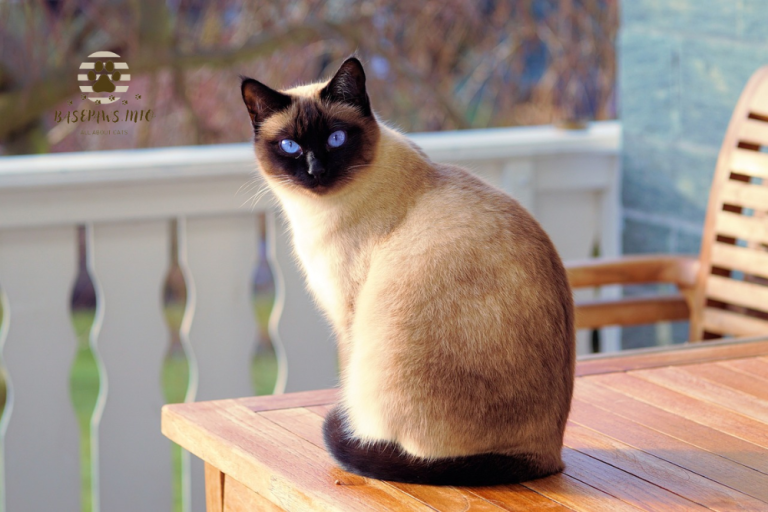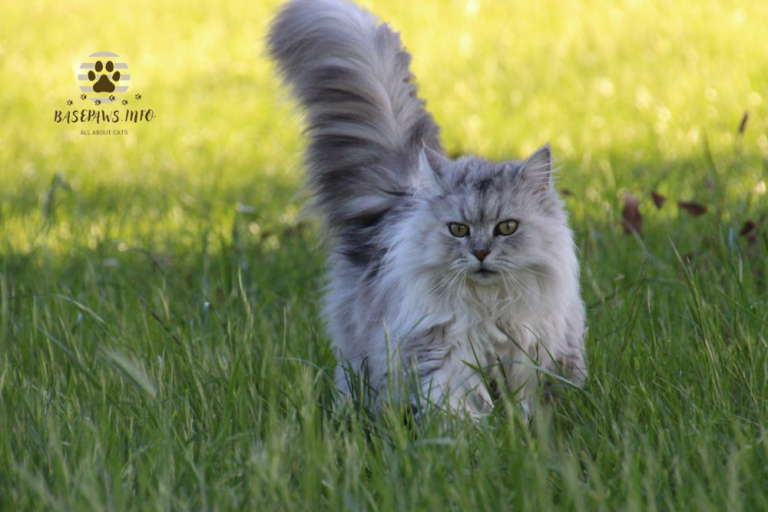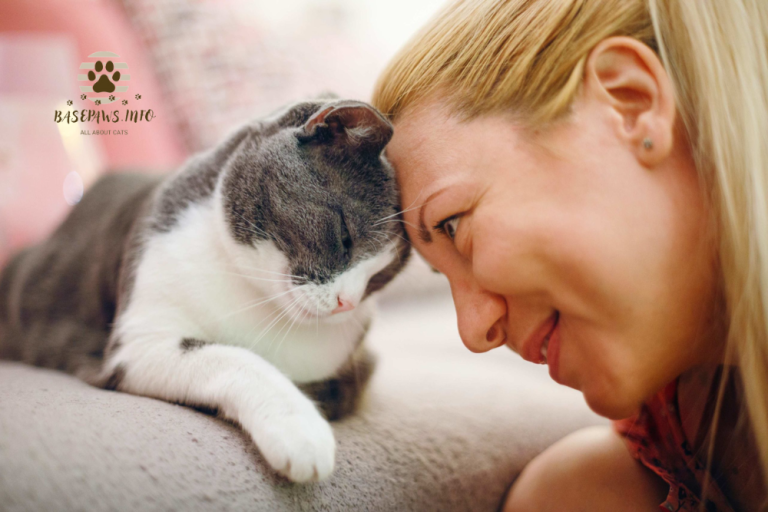Decoding Your Cat’s Emotions Through Body Language
Understanding your cat’s emotions can feel like a mystery, but it’s key to nurturing a strong bond with your feline friend. Just like humans, cats express their feelings through various body language cues. When we learn to interpret these signals, we can provide better care and create a more supportive environment for them.
Have you ever wondered why your cat suddenly bolts across the room or seems to stare intently at nothing? These behaviors often hold deeper meanings. For example, a playful swat with a paw may indicate excitement, while a tense posture could signal fear or discomfort. By paying attention to your cat’s body language, you can better understand their needs and emotions, leading to a happier, healthier pet.
In this guide, we will explore the fascinating world of feline body language, focusing on key indicators such as eye expressions and tail movements. You’ll discover how to interpret these signals and respond appropriately, ensuring your cat feels safe, loved, and understood. Let’s dive into the nuances of cat communication and unlock the secrets of your furry companion’s emotions!
Playful and Happy Cat Signals
When your cat is feeling playful and content, their body language will reflect this joyful state. Look for the following signs:
- Ears up and forward: When a cat’s ears are perked up and facing forward, it indicates curiosity and excitement. This position shows they are alert and engaged in their surroundings.
- Playful pouncing: Cats often display a “hunting” behavior when they are in a playful mood. You might see them crouching low and then springing forward as if they are stalking a toy or even a shadow.
- Rolling over: A cat that rolls onto its back is showing trust and comfort. This position invites interaction and indicates that they feel safe with you.
- Purring and kneading: A content cat may purr softly and knead with their paws, which mimics the behavior of kittenhood when nursing. This behavior signals comfort and happiness.
Stressed and Anxious Cat Behaviors
Cats can become stressed or anxious due to various factors, including changes in their environment, loud noises, or the presence of unfamiliar people or animals. Signs of stress include:
- Hiding: If your cat suddenly seeks refuge under furniture or in closets, it may indicate they are feeling threatened or anxious. Cats often retreat to safe spaces when overwhelmed.
- Tail lashing: A cat that swishes its tail back and forth rapidly may be feeling irritated or agitated. This behavior often precedes more aggressive actions if the stressor is not removed.
- Vocalization changes: Increased vocalization, especially in a high-pitched or distressed tone, can indicate anxiety. Some cats may yowl or meow excessively when stressed.
- Over-grooming: Cats may lick themselves excessively as a way to self-soothe when anxious, leading to bald patches or irritated skin.
Fearful, Aggressive, or Defensive Postures
Recognizing when your cat is fearful or feels threatened can prevent unwanted confrontations or injuries. Watch for these signs:
- Body crouching: A cat that crouches low to the ground with its body tense is likely feeling fearful. They may be preparing to flee or defend themselves.
- Ears pinned back: When a cat’s ears are flattened against their head, it indicates fear, aggression, or defensiveness. This is a clear sign that they feel threatened and may react unpredictably.
- Hissing or growling: Vocalizations such as hissing or growling signal that a cat feels threatened and is ready to defend itself. These sounds often precede a swipe or bite if the threat persists.
- Swatting or lunging: An aggressive cat may swat at an object or person as a warning to back off. If you see this behavior, it’s best to give them space.
Painful Cat Behavior: When to Worry
Cats often hide their pain well, so it’s essential to recognize signs of discomfort. Here are behaviors to monitor:
- Increased vocalization: If your cat begins to vocalize more than usual or makes sounds that seem distressed, it may be a sign they are in pain.
- Changes in grooming: Cats in pain may stop grooming altogether or, conversely, may over-groom certain areas in an attempt to soothe their discomfort.
- Reluctance to move: A cat that is hesitant to jump, run, or engage in their usual activities may be experiencing pain, particularly in their joints or muscles.
- Restlessness or pacing: Cats in pain may pace back and forth, unable to find a comfortable position. They may also hide more frequently or seem withdrawn.
How to Tell a Cat’s Emotions by Its Eyes
A cat’s eyes are often referred to as the “windows to their soul.” The way your cat’s eyes look can reveal a lot about their emotions. Here’s how to interpret their eye expressions:
1. Slow Blinking
- Emotion: Trust and Affection
- Interpretation: If your cat looks at you and slowly blinks, it’s a sign that they feel safe and comfortable around you. You can return the gesture to reinforce your bond!
2. Wide Eyes
- Emotion: Curiosity or Excitement
- Interpretation: When a cat’s eyes are wide open, it often indicates curiosity or interest. They might be excited about something new in their environment, like a toy or a person.
3. Dilated Pupils
- Emotion: Fear or Aggression
- Interpretation: Large pupils can indicate that your cat is scared or agitated. It’s a warning sign to approach them with caution, as they may be ready to flee or defend themselves.
4. Squinting Eyes
- Emotion: Contentment or Relaxation
- Interpretation: A cat that squints its eyes is usually in a relaxed state. It shows trust and comfort, making it a good time for gentle petting or interaction.
5. Staring
- Emotion: Challenge or Aggression
- Interpretation: If your cat is staring at you or another animal without blinking, they may be feeling threatened or asserting dominance. It’s best to give them space in this situation.
How to Tell a Cat’s Emotions by Its Tail
A cat’s tail is an essential part of its body language. The position and movement of the tail can indicate various emotions. Here’s what to look for:
1. Tail Held High
- Emotion: Happiness or Confidence
- Interpretation: A tail held high, often with a slight curve at the tip, shows that your cat is feeling confident and happy. They’re likely to be in a playful mood or exploring their environment.
2. Puffed-Up Tail
- Emotion: Fear or Agitation
- Interpretation: When a cat’s tail puffs up and becomes bushy, it’s a clear sign that they feel threatened or scared. This makes them appear larger to potential threats, signaling that they might be ready to defend themselves.
3. Low or Drooping Tail
- Emotion: Submission or Sadness
- Interpretation: A tail held low or drooping can indicate that a cat feels submissive or is experiencing sadness. It’s a sign that they may not be feeling their best or might be in a less confident state.
4. Tail Flicking or Lashing
- Emotion: Agitation or Irritation
- Interpretation: If your cat flicks or lashes their tail, it usually indicates frustration or annoyance. It’s best to give them some space and not engage during this behavior.
5. Tail Wrap Around Body
- Emotion: Contentment or Affection
- Interpretation: A cat that wraps its tail around its body or another cat’s body is showing affection and comfort. It’s a way for them to express trust and warmth towards their companions.
Urgent Health Warning Signs
Certain symptoms indicate that your cat may need immediate veterinary care. Being aware of these warning signs can save your cat’s life.
Breathing Difficulties and Respiratory Issues
Respiratory problems in cats can be serious and require immediate attention. Watch for:
- Labored breathing: If your cat is breathing rapidly, has wheezing sounds, or seems to be struggling to breathe, it may indicate respiratory distress.
- Coughing or gagging: Frequent coughing or gagging can signal underlying issues such as asthma, bronchitis, or foreign object obstruction.
- Open-mouth breathing: Cats are obligate nasal breathers, so if you see your cat breathing through their mouth, it’s an urgent situation that needs immediate evaluation.
Vomiting, Weight Loss, or Sudden Appetite Changes
Changes in appetite and gastrointestinal distress are often signs of serious health issues:
- Frequent vomiting: Occasional vomiting can be normal, but repeated vomiting, especially with blood or bile, requires urgent veterinary attention.
- Sudden weight loss: If your cat has lost a noticeable amount of weight in a short time, it may be a sign of serious conditions such as diabetes, hyperthyroidism, or cancer.
- Loss of appetite: A sudden refusal to eat can indicate dental problems, gastrointestinal issues, or systemic diseases. Cats can develop liver problems if they stop eating for just a couple of days.
Dental and Metabolic Diseases (Hyperthyroidism, Diabetes)
Dental health can significantly impact a cat’s overall health, and metabolic diseases often manifest through specific signs:
- Bad breath or drooling: Foul-smelling breath and excessive drooling can indicate dental disease, which, if left untreated, can lead to systemic infections.
- Signs of hyperthyroidism: Increased appetite combined with weight loss, hyperactivity, and excessive vocalization may indicate hyperthyroidism, a common condition in older cats.
- Diabetes signs: Increased thirst, urination, and weight loss can be symptoms of diabetes mellitus in cats. If you notice these signs, consult your veterinarian for testing.
Urinary Tract Problems and Severe Pain Indicators
Urinary issues can be life-threatening, especially in male cats:
- Straining to urinate: If your cat is straining to urinate but producing little to no urine, it could indicate a blockage, which requires immediate veterinary intervention.
- Blood in urine: Presence of blood in urine can signify infections, bladder stones, or tumors. This is an urgent situation that should be evaluated by a vet.
- Excessive licking: Cats that lick their genital area excessively may be experiencing urinary tract issues or infections.
Dehydration, Swelling, and Gum Color Changes
Signs of dehydration and oral health can reveal much about your cat’s overall well-being:
- Dehydration: A dehydrated cat may have dry, sticky gums and decreased skin elasticity. If you pinch the skin and it doesn’t return quickly, your cat may be dehydrated and needs immediate fluids.
- Swelling: Any swelling in the body, particularly around the abdomen or limbs, may indicate serious underlying health issues, including tumors or organ dysfunction.
- Gum color: Healthy cat gums should be a light pink color. Dark red, yellow, or pale gums can signal serious health problems, such as infections or anemia.
When to Seek Immediate Veterinary Attention
Certain situations require swift action to prevent worsening health conditions. If you observe any of the following signs, contact your veterinarian immediately:
- Trauma or injuries: If your cat has been involved in an accident, appears to be in shock, or shows visible injuries, immediate veterinary care is crucial.
- Collapse, seizures, or imbalance: A cat that collapses, has seizures, or exhibits signs of severe imbalance may have neurological issues that require urgent evaluation.
- Poison exposure: If you suspect your cat has ingested a toxic substance or shown signs of poisoning (vomiting, drooling, lethargy), seek veterinary care immediately.
- Severe pain or high body temperature: If your cat is in obvious pain (crying, hiding, aggressive behavior when touched) or has a fever (normal cat temperature is around 101.5°F to 102.5°F), prompt veterinary attention is essential.
By understanding your cat’s body language and recognizing these urgent health warning signs, you can take proactive steps to ensure their well-being. Always trust your instincts—if you believe something is wrong, don’t hesitate to consult with a veterinarian. Early intervention can make all the difference in your cat’s health and happiness.







